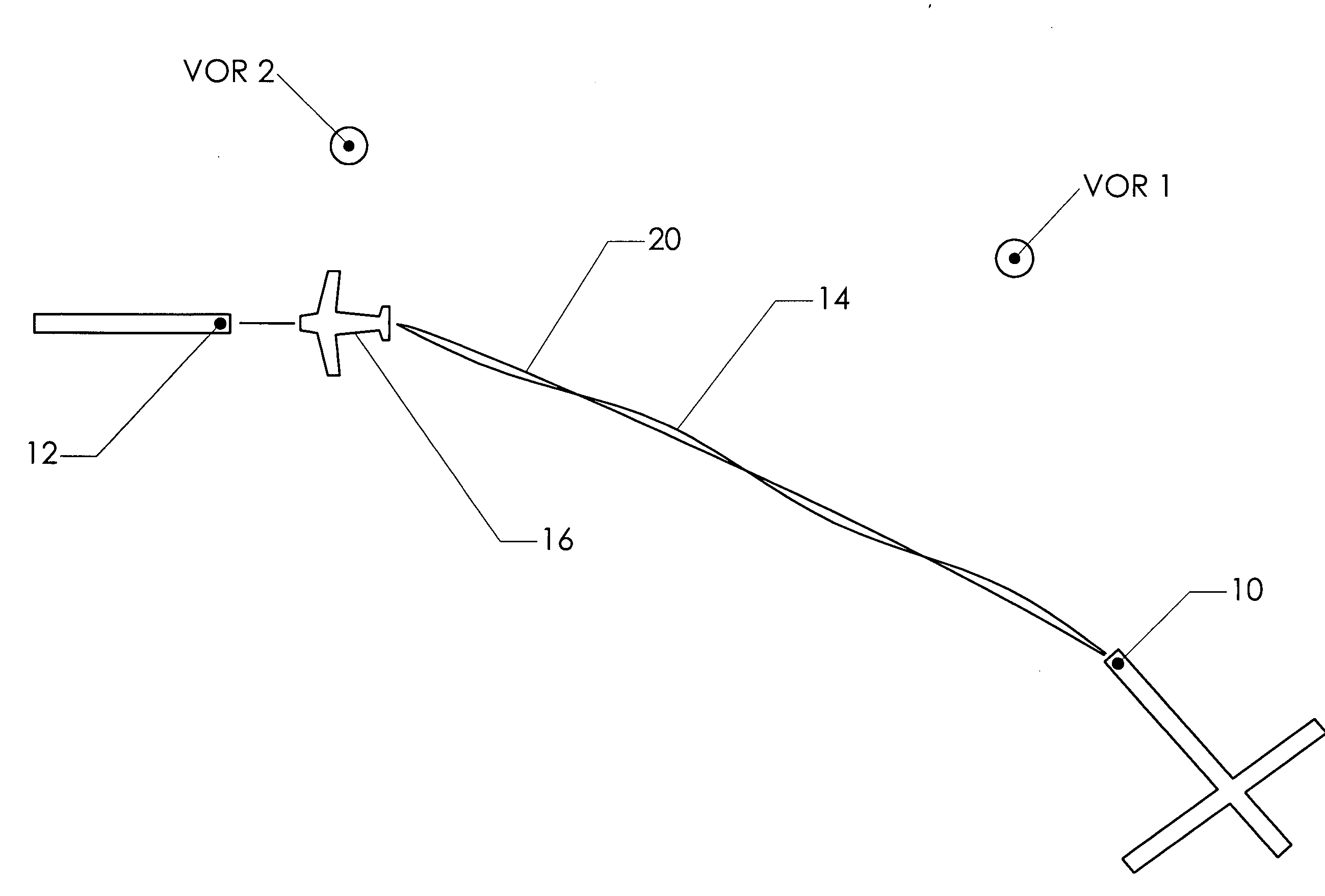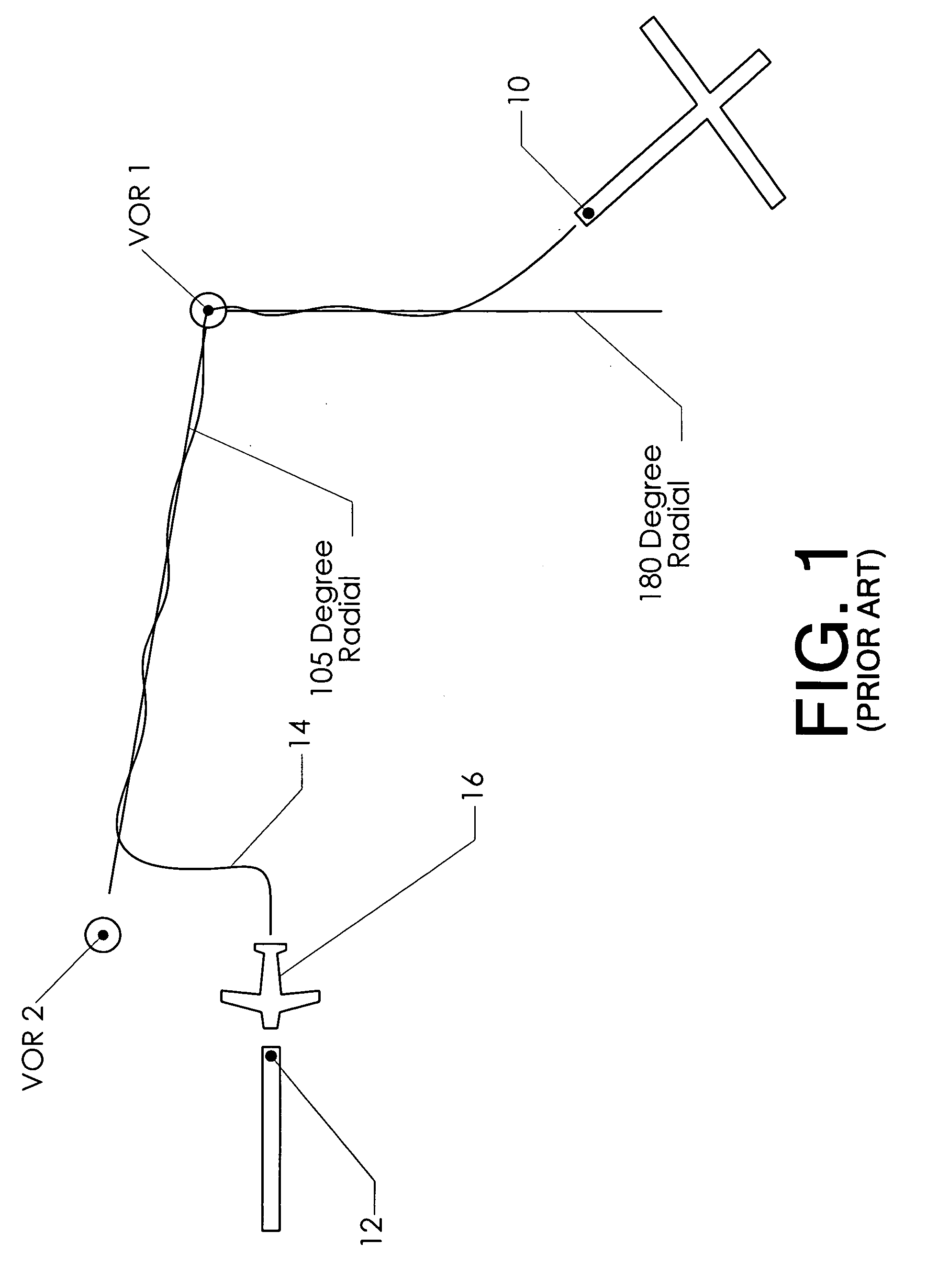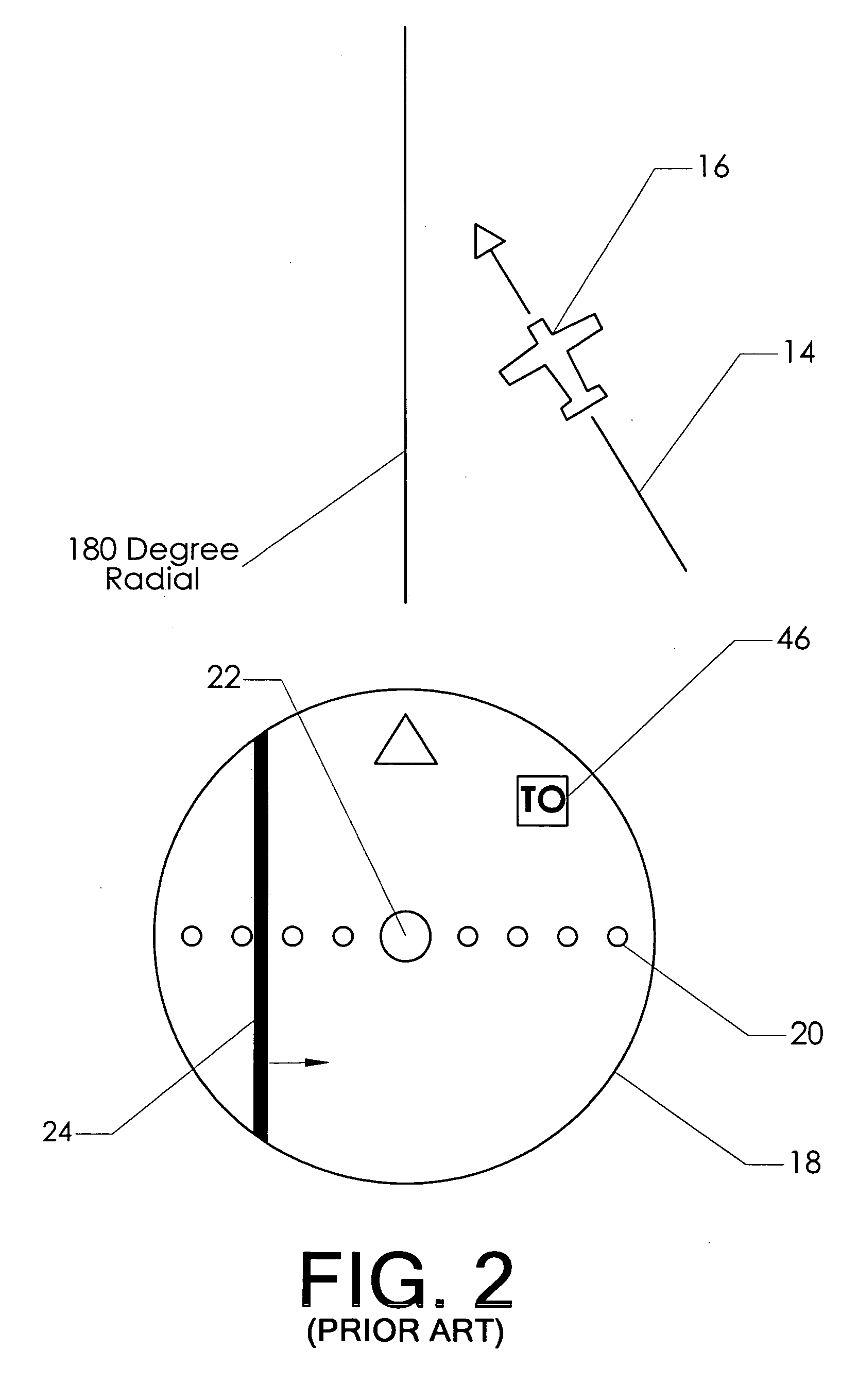GPS-based steering needle instrument
a technology of steering needle and GPS, applied in the field of navigation, can solve the problems of limited access, obstructed signals of mountains, and inaccessible routes,
- Summary
- Abstract
- Description
- Claims
- Application Information
AI Technical Summary
Benefits of technology
Problems solved by technology
Method used
Image
Examples
Embodiment Construction
[0040]FIG. 4 is a schematic plan view graphically displaying some common navigation terms which are useful to the reader's understanding. Aircraft 16 is attempting to fly along desired course 32, which lies between two waypoints (WPT1 and WPT2). The aircraft is oriented along a heading 28. The cross wind causes the aircraft to move along ground track 14, meaning that it is slipping laterally as it flies instead of moving purely along its heading. Target bearing 30 is a vector drawn from the aircraft to the destination (WPT2).
[0041] The reader will observe that the aircraft is located some distance away from the desired course. This distance is commonly known as cross track error 34, which represents the perpendicular distance between the aircraft and the desired course.
[0042] Significantly, GPS navigation units have the ability to accurately measure two of the most important values shown in FIG. 4 (The term “GPS navigation unit” will be understood to include the actual receiving u...
PUM
 Login to View More
Login to View More Abstract
Description
Claims
Application Information
 Login to View More
Login to View More - R&D
- Intellectual Property
- Life Sciences
- Materials
- Tech Scout
- Unparalleled Data Quality
- Higher Quality Content
- 60% Fewer Hallucinations
Browse by: Latest US Patents, China's latest patents, Technical Efficacy Thesaurus, Application Domain, Technology Topic, Popular Technical Reports.
© 2025 PatSnap. All rights reserved.Legal|Privacy policy|Modern Slavery Act Transparency Statement|Sitemap|About US| Contact US: help@patsnap.com



